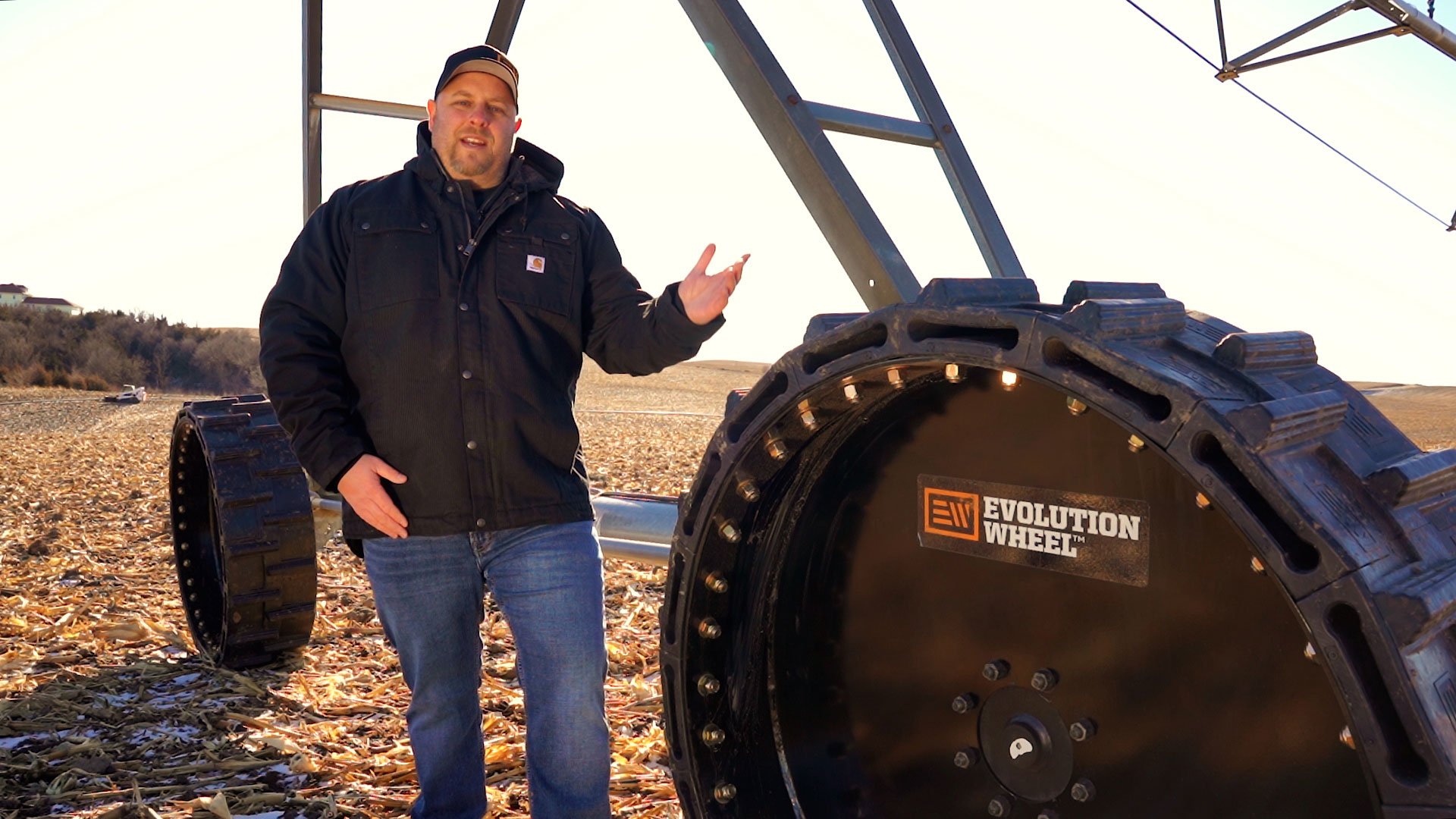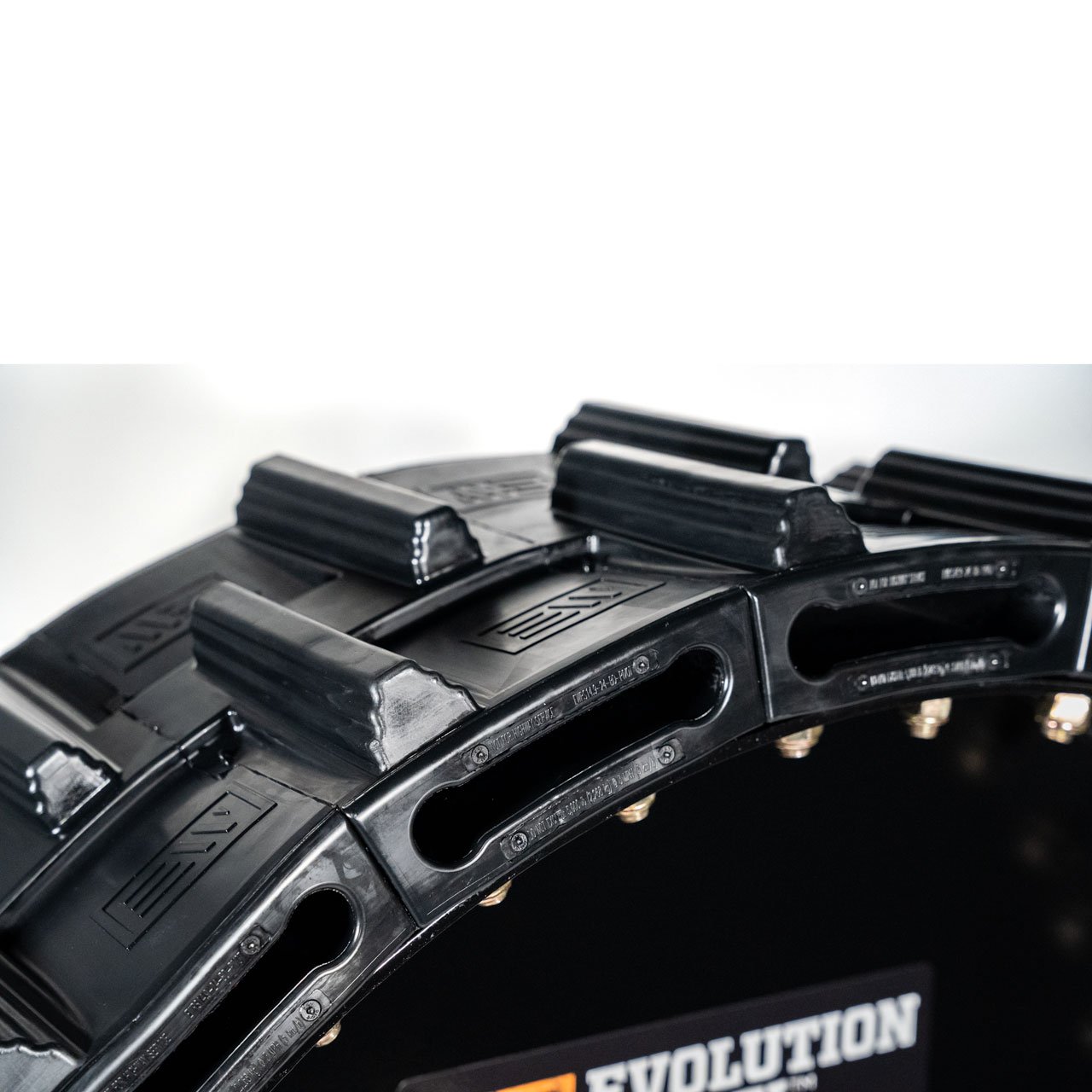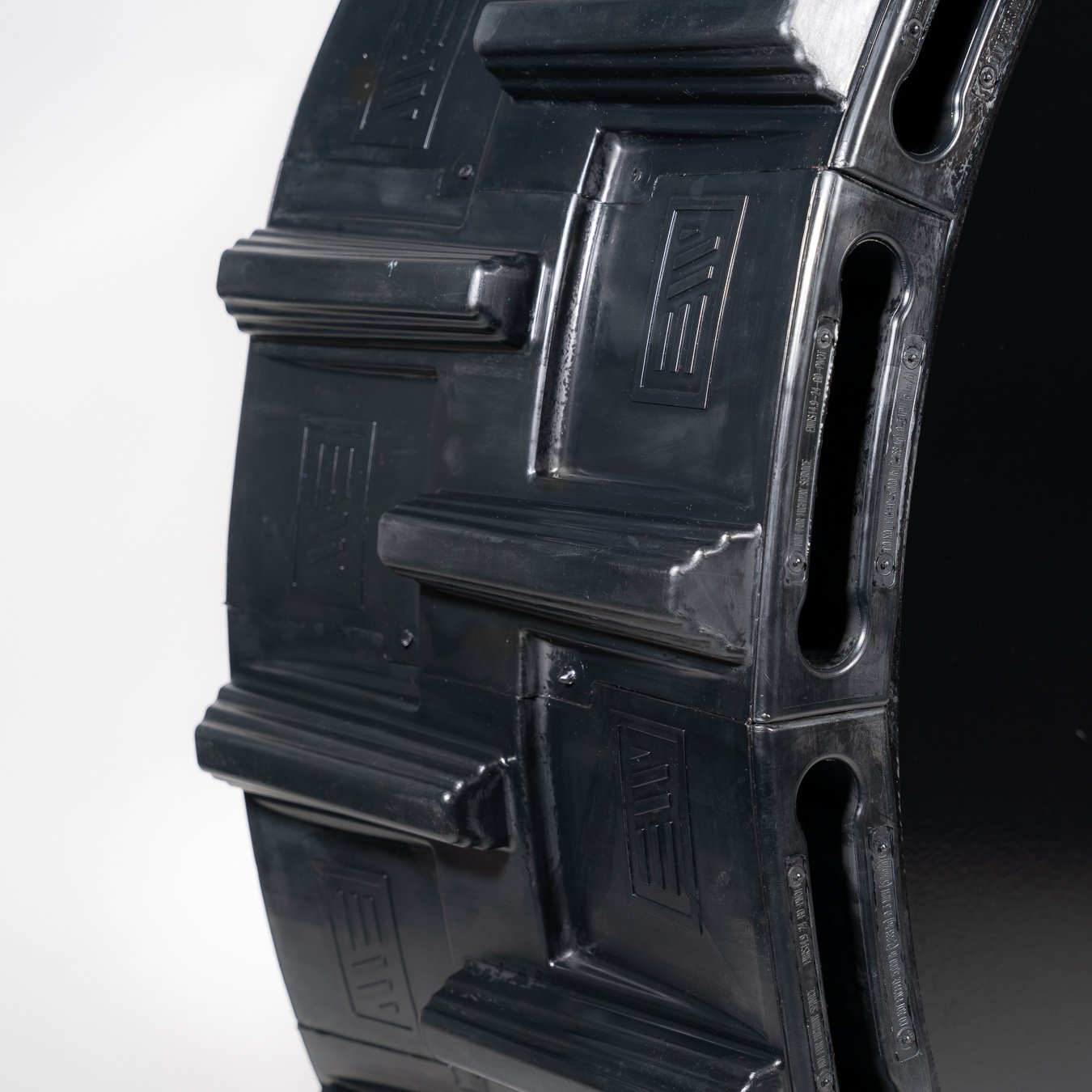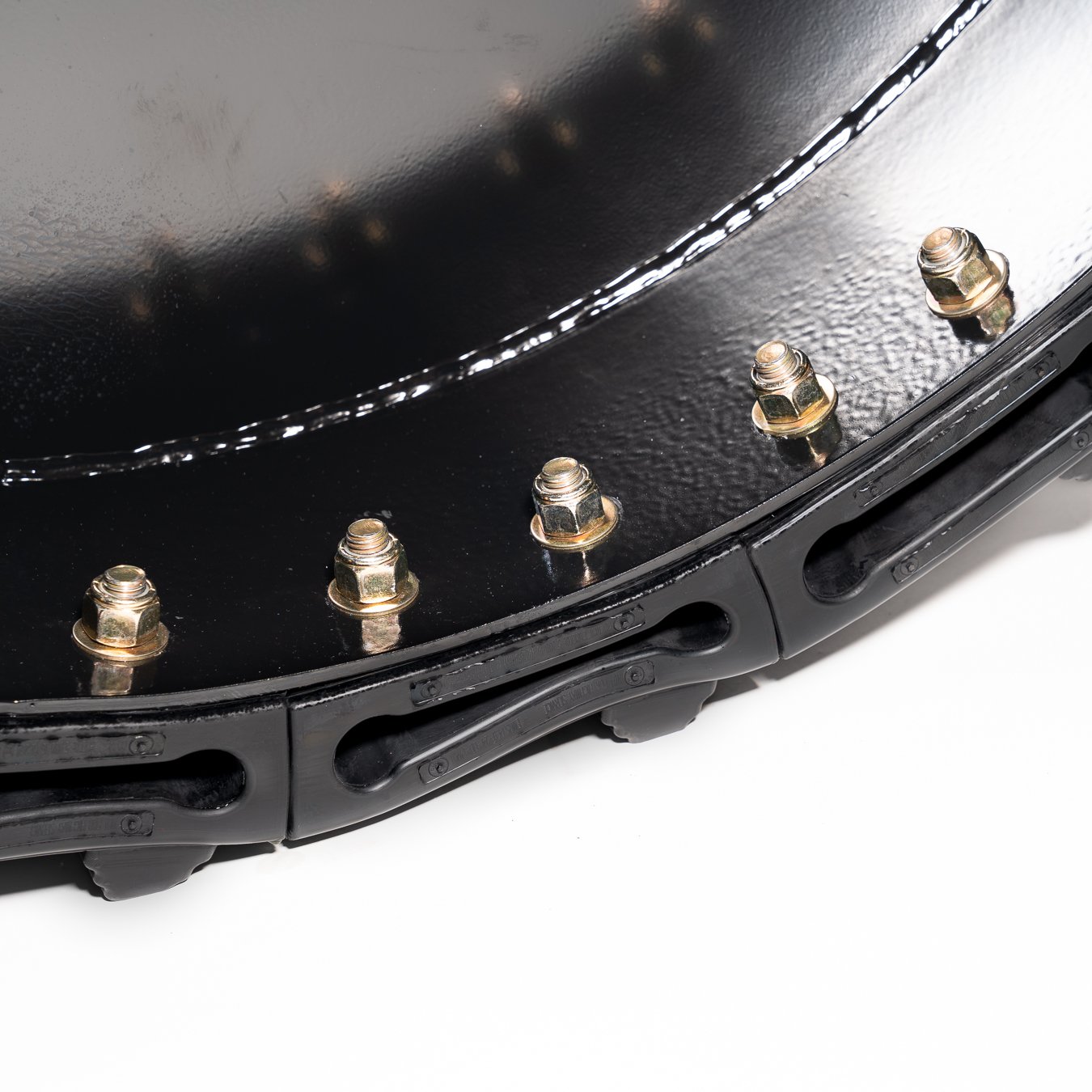Pneumatic 11.2 38 Irrigation Tires Vs. The EWRS-PIVOT Series
What's the difference between the EWRS-PIVOT series 14.9" x 24" airless irrigation tire when compared to a pneumatic 11.2" x 38' irrigation tire.
Flats
The EWRS-PIVOT series is an airless tire and will never go flat. Pivots are often working in extreme conditions such as high-intensity UV light and are constantly wet and muddy, causing the rubber to rot and deteriorate, and the tire to eventually go flat. When a tire goes flat it starts filling with mud weighing down your irrigation system causing downtime and gearbox damage.
The EWRS-PIVOT series irrigation wheel is an airless wheel, you will never have to deal with a flat tire ever again. In addition to being an airless tire, the EWRS-PIVOT series is segmented. If a segment of the rubber is damaged, then you can simply take that section off the rim and replace it with a new one making the tire easily serviceable right in the field.
Traction
Traction is a big problem when it comes to pivot tires. Operating in wet and muddy conditions demands a lot of traction, however, most tires sacrifice floatation to increase traction which results in deep wheel ruts.
Your average pneumatic tire has an all-terrain chevron tread design. The problem with directional tread is that it digs into the ground to provide traction. A pivot travels the same path day in and day out. This along with the angled lugs and the round convex shape which pushes material outward from underneath the tire results in pivot track formation.
Most airless tires are criticized for having poor traction. This is because materials commonly used to make airless tires like steel and plastic lack flexibility which is what allows the tire to wrap around obstacles and increases traction. The EWRS-PIVOT pivot tire is designed with core holes that allow the tire to flex around objects mimicking a pneumatic. These core holes are open hollow areas in the rubber that when the compress completely, pushing material in the hole out making them self-cleaning as well.
A bi-directional or non-directional tread design, like the one on the EWRS-PIVOT series, is a better tread for irrigation applications. The EWRS-PIVOT’s bi-direction tread is designed with lugs that are parallel with each other to not push material out from under the tire. Allowing for more traction without the digging effect of the all-terrain chevron style tread.
Convex vs concave
Pneumatic pivot tires have a convex profile where the peak of the tire is in the center of the rubber. This along with the tread design pushes material to the sides and results in the creation of ruts or pivot tracks.
The EWRS-PIVOT series is designed with a concave profile. The rubber’s peak or tallest points of the tire are on the edges of the rubber instead of the center. This design holds mud and material underneath the tire instead of pushing it outwards allowing for more floatation.
Profile
Because of the convex profile pneumatic pivot tires have, the width of the tire is not truly 11.2”. The sides of the tire curve up which results in ground contact being narrower than initially advertised.
The EWRS-PIVOT has a true to spec 14.9” width profile. this maximizes surface area and ground contact to get the most floatation and traction at the same time.
Floatation
Farmers who use 38” Irrigation tires have often given up on preventing ruts from forming and opted for 11.2” x 38” irrigation tires for a narrower track as well as more pivot depth clearance. The issue is that these tires are that they go flat, and deep ruts still cause problems out in the field.
The EWRS-PIVOT series airless irrigation tire won’t cause these deep ruts in the first place. It's concave true to spec 14.9” x 24” profile means that it has some of the best floatation in the industry. The core holes each segment is designed with, along with the bi-directional tread design means that it doesn’t it has both superior tractions as well as floatation.
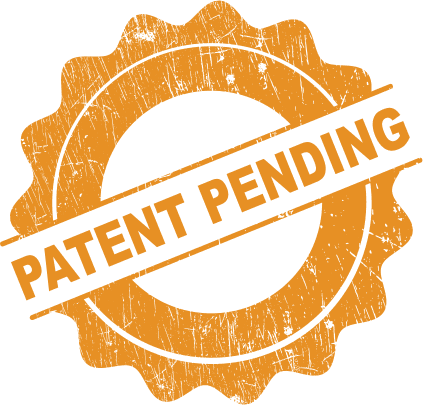
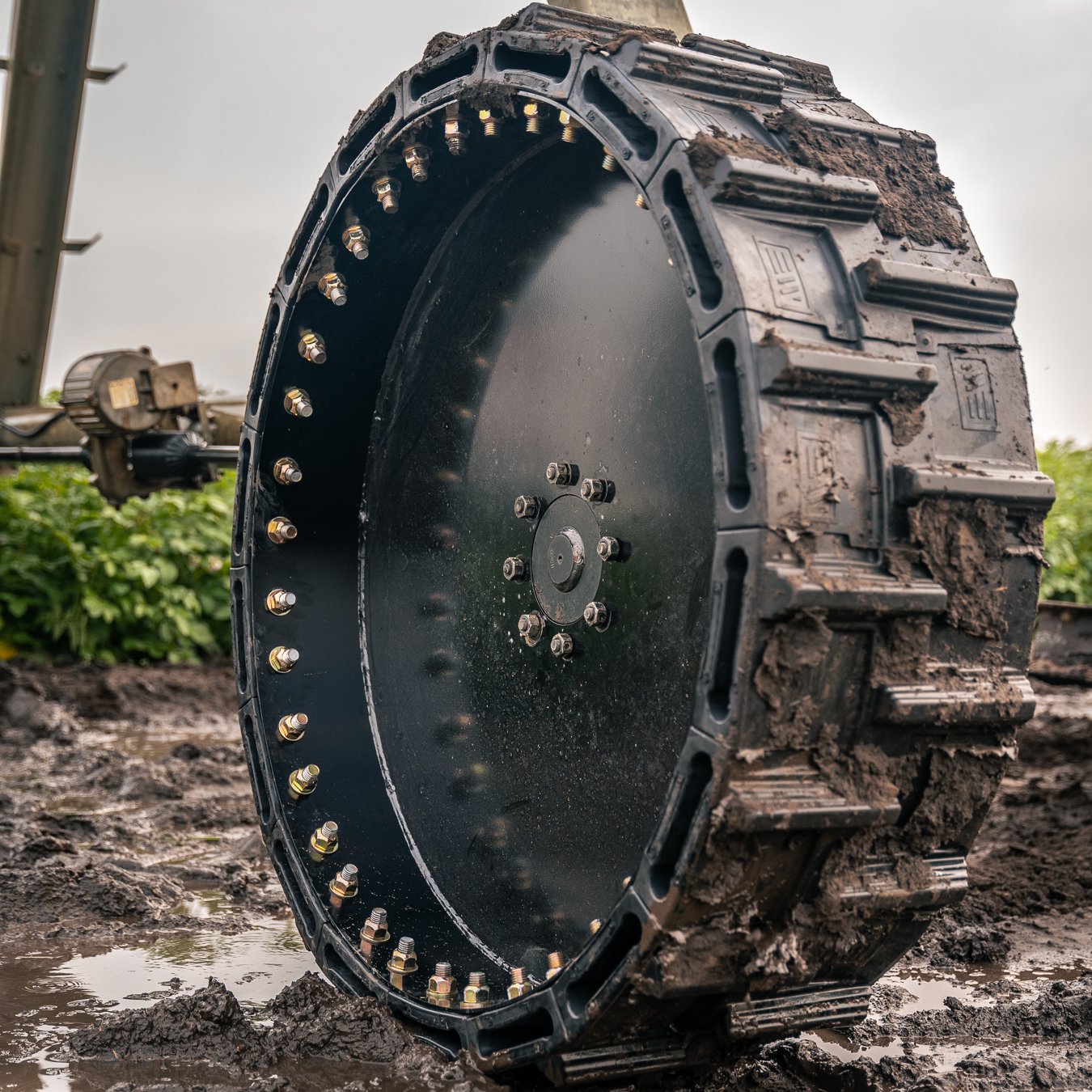
EWRS-PIVOT SERIES
The EWRS-PIVOT series of airless pivot tires from Evolution Wheel offers the most advanced airless technology to the irrigation market. This solution delivers serviceability, traction, and floatation into one impressive offering.
Our tread design and tire profile offer greater traction through mud and obstacles. The unique concave contact face helps eliminate rutting by keeping dirt under the tire, where it belongs. The face of the tire is pointed inwards. Compared to typical pneumatic irrigation tires which convex shape push mud out from under the tire, causing ruts.
Our proprietary segmented design bolts onto our high strength wheel, allowing you the ability to service the tire quickly, eliminating the need to change a tire in the field.
Unlike other airless pivot tires, the EWRS-PIVOT compresses flat pushing material out, it's a self-cleaning system. The compressed cores elongate the footprint of the tire allowing it to wrap over obstacles increasing traction and reducing ground pressure.

Related Pages
If this page was informative, check these out:


